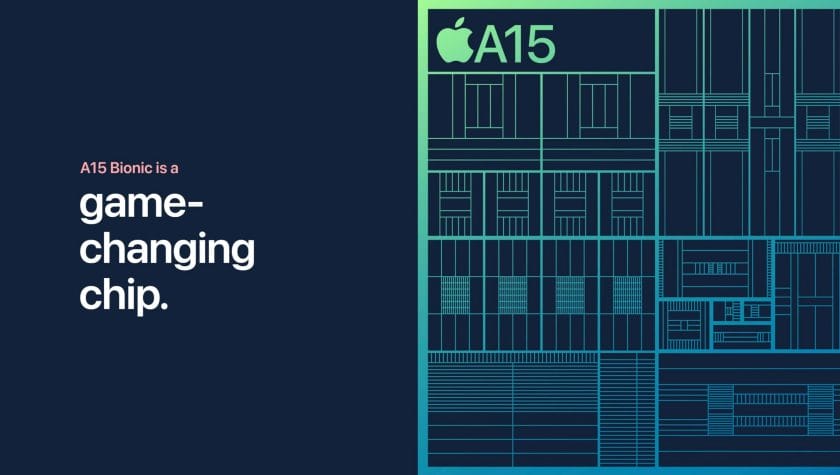Neural networks are revolutionizing the world of artificial intelligence and machine learning. With their ability to learn and adapt, they offer a multitude of benefits that have the potential to transform industries and improve our daily lives. In this article, we will explore some of the key advantages of neural networks and how they are being used in various applications.
What is a neural network and how does it work?
As an AI expert, I often get asked what a neural network is and how it works. Simply put, a neural network is a type of machine learning algorithm that is modeled after the structure and function of the human brain. It consists of layers of interconnected nodes or “neurons” that process information and make predictions based on input data.
The basic building block of a neural network is the neuron, which takes in multiple inputs, performs some calculations on them using weights and biases, and produces an output. These outputs are then fed into the next layer of neurons until the final output is produced.
Neural networks can be trained using supervised learning, unsupervised learning, or reinforcement learning techniques. In supervised learning, the network is given labeled training data and adjusts its weights and biases to minimize the difference between its predicted outputs and the actual outputs. Unsupervised learning involves finding patterns in unlabeled data without any specific goal in mind. Reinforcement learning involves using rewards or punishments to train the network to make certain decisions.
Overall, neural networks are incredibly powerful tools for solving complex problems in areas such as image recognition, natural language processing, and predictive analytics.
Advantages of using neural networks compared to traditional machine learning algorithms
One major advantage of using neural networks over traditional machine learning algorithms is their ability to handle large amounts of complex data with high dimensionality. Neural networks can learn patterns from raw data without requiring feature engineering or manual selection of relevant features.
Another advantage is their ability to generalize well to unseen data. Neural networks can learn complex nonlinear relationships between inputs and outputs that may not be apparent from simple statistical models.
Neural networks are also highly flexible and can be adapted to different types of problems by adjusting their architecture or hyperparameters. They can be used for both classification and regression tasks, as well as for unsupervised learning and reinforcement learning.
How can neural networks improve accuracy in complex data analysis tasks?
Neural networks are particularly well-suited for improving accuracy in complex data analysis tasks because they can learn to extract meaningful features from raw data. This is especially useful in image recognition, where traditional machine learning algorithms may struggle to identify relevant patterns in pixel values.
Neural networks can also handle noisy or incomplete data by learning to recognize patterns even when some inputs are missing or corrupted. This makes them valuable tools for tasks such as speech recognition, where background noise or accents can make it difficult to accurately transcribe spoken words.
In addition, neural networks can be used to combine different types of data sources or modalities, such as text and images, to improve accuracy in tasks such as sentiment analysis.
Overall, the ability of neural networks to learn complex nonlinear relationships between inputs and outputs makes them powerful tools for improving accuracy in a wide range of complex data analysis tasks.
Can neural networks be used to predict future trends or outcomes based on past data?
Yes, neural networks can be used to predict future trends or outcomes based on past data by training them on historical time series data. Time series forecasting involves predicting future values of a variable based on its past values.
One common approach is to use recurrent neural networks (RNNs), which are designed specifically for processing sequences of input data. RNNs have a “memory” that allows them to take into account previous inputs when making predictions about future outputs.
Another approach is to use convolutional neural networks (CNNs) with 1D filters that scan over time series data to extract relevant features. These features can then be fed into fully connected layers for prediction.
Overall, the ability of neural networks to learn patterns from time series data makes them valuable tools for predicting future trends or outcomes based on past data.
Industries that have successfully implemented neural networks and their benefits
Neural networks have been successfully implemented in a wide range of industries, including finance, healthcare, retail, and manufacturing.
In finance, neural networks are used for tasks such as fraud detection, credit risk assessment, and stock price prediction. By analyzing large amounts of historical data, neural networks can identify patterns that may not be visible to humans and make more accurate predictions about future outcomes.
In healthcare, neural networks are used for tasks such as disease diagnosis, drug discovery, and personalized medicine. By analyzing patient data such as medical history and genetic information, neural networks can identify risk factors or treatment options that may not be apparent from traditional diagnostic methods.
In retail, neural networks are used for tasks such as product recommendations and demand forecasting. By analyzing customer purchase histories and browsing behavior, neural networks can make personalized recommendations that increase sales and improve customer satisfaction.
In manufacturing, neural networks are used for tasks such as predictive maintenance and quality control. By analyzing sensor data from machines or products on the production line, neural networks can detect anomalies or defects before they cause problems.
Overall, the ability of neural networks to analyze large amounts of complex data makes them valuable tools for improving efficiency and accuracy in a wide range of industries.
Adaptation of neural networks to changing data patterns over time
As an AI expert at Prometheuz, I’m often asked how neural networks can adapt to changing data patterns over time. One approach is to use online learning techniques that update the network’s weights and biases in real-time as new data becomes available.
Another approach is to use recurrent neural networks (RNNs) with long short-term memory (LSTM) cells that allow the network to retain information about past inputs for longer periods of time. This is useful in applications such as natural language processing where the meaning of a sentence may depend on previous words.
In addition, neural networks can be trained on data from multiple time periods to learn patterns that are consistent across time. This is useful in applications such as financial forecasting where the same patterns may repeat over different time periods.
Overall, the ability of neural networks to adapt to changing data patterns over time makes them valuable tools for analyzing and predicting complex phenomena.
Limitations or drawbacks of using neural networks in certain situations
Despite their many advantages, neural networks do have some limitations or drawbacks that should be taken into account when using them for certain tasks.
One limitation is their “black box” nature, meaning it can be difficult to understand how they arrived at a particular prediction or decision. This can make it difficult to identify and correct errors or biases in the model.
Another limitation is the need for large amounts of labeled training data. Neural networks require a significant amount of data to learn meaningful patterns and produce accurate predictions, which can be a challenge in applications where labeled data is scarce or expensive to obtain.
Neural networks can also be computationally expensive and require specialized hardware such as GPUs or TPUs for training and inference. This can make them less accessible for small businesses or individuals with limited resources.
Overall, while neural networks are powerful tools for solving complex problems, it’s important to consider their limitations and potential drawbacks when deciding whether they are appropriate for a particular task.
Training and optimization of neural networks for specific tasks or applications
As an AI expert at Prometheuz, I’m often asked about the best practices for training and optimizing neural networks for specific tasks or applications. One key consideration is selecting an appropriate architecture that balances complexity with performance. A simple architecture may be easier to train but may not capture all relevant features of the input data, while a more complex architecture may overfit the training data and perform poorly on new data.
Another consideration is selecting appropriate hyperparameters such as learning rate, batch size, and regularization strength. These hyperparameters can significantly affect the performance of the network and should be tuned carefully to achieve optimal results.
In addition, techniques such as transfer learning and fine-tuning can be used to adapt pre-trained neural networks for specific tasks or applications. This can save time and resources compared to training a network from scratch.
Overall, careful selection of architecture and hyperparameters, along with appropriate use of pre-trained models, can greatly improve the performance of neural networks for specific tasks or applications.
The combination of multiple neural networks for greater accuracy and efficiency
As an AI expert at Prometheuz, I’m often asked about the benefits of combining multiple neural networks for greater accuracy and efficiency. One approach is to use ensemble methods that combine the outputs of multiple networks to produce a final prediction. This can improve accuracy by reducing the impact of individual network errors or biases.
Another approach is to use multi-task learning where multiple related tasks are learned simultaneously using a single network. This can improve efficiency by allowing shared representations to be learned across tasks.
In addition, techniques such as adversarial training and generative adversarial networks (GANs) can be used to train multiple networks in a competitive setting where one network tries to generate realistic data while another network tries to distinguish between real and fake data. This can lead to more robust representations that generalize well across different types of input data.
Overall, combining multiple neural networks through ensemble methods or multi-task learning can improve both accuracy and efficiency in a wide range of applications.
The role of deep learning techniques in enhancing the capabilities of neural networks
Deep learning techniques have played a major role in enhancing the capabilities of neural networks by allowing them to learn more complex representations from raw data. Deep learning involves training neural networks with many layers (hence “deep”) that allow them to learn hierarchical representations that capture increasingly abstract features of the input data.
One key technique in deep learning is convolutional neural networks (CNNs) that use 2D or 3D filters to extract relevant features from images or videos. Another key technique is recurrent neural networks (RNNs) with long short-term memory (LSTM) cells that allow them to retain information about past inputs for longer periods of time.
In addition, techniques such as autoencoders and variational autoencoders can be used for unsupervised learning and feature extraction. These techniques involve training a network to reconstruct its input data from a lower-dimensional representation, allowing it to learn meaningful features without requiring labeled data.
Overall, the use of deep learning techniques has greatly enhanced the capabilities of neural networks and expanded their applications to areas such as computer vision, natural language processing, and speech recognition.
Differences between recurrent neural networks and other types, and their unique advantages
Recurrent neural networks (RNNs) are a type of neural network that are designed specifically for processing sequences of input data. Unlike feedforward neural networks that process each input independently, RNNs have a “memory” that allows them to take into account previous inputs when making predictions about future outputs.
One advantage of RNNs is their ability to handle variable-length sequences of input data. This makes them valuable tools for tasks such as speech recognition or natural language processing where the length of an input sequence may vary.
Another advantage is their ability to model temporal dependencies between inputs. By retaining information about past inputs through their memory cells, RNNs can capture complex nonlinear relationships between inputs and outputs that may not be apparent from simple statistical models.
However, one drawback of RNNs is their susceptibility to vanishing gradients when training on long sequences. This occurs when the gradient signal becomes too small during backpropagation through time, making it difficult for the network to learn long-term dependencies.
Overall, the unique advantages of RNNs make them valuable tools for processing sequences of input data and modeling temporal dependencies between inputs and outputs.
The use of unsupervised learning methods with neural networks and their benefits
While supervised learning is the most common type of neural network training, unsupervised learning methods can also be used to learn meaningful representations from raw data. Unsupervised learning involves finding patterns in unlabeled data without any specific goal in mind.
One approach to unsupervised learning is autoencoders, which involve training a network to reconstruct its input data from a lower-dimensional representation. This allows the network to learn meaningful features that capture important patterns in the input data.
Another approach is generative models such as generative adversarial networks (GANs) or variational autoencoders (VAEs), which learn to generate new samples that are similar to the original input data. These models can be used for tasks such as image generation or anomaly detection.
Overall, the use of unsupervised learning methods with neural networks can greatly improve their ability to learn meaningful representations from raw data without requiring labeled examples.
The use of convolutional neural networks for image recognition and analysis tasks
Convolutional neural networks (CNNs) are a type of neural network that are designed specifically for processing images or other types of multidimensional data. CNNs use 2D or 3D filters that scan over the input data to extract relevant features at different scales or orientations.
One advantage of CNNs is their ability to handle large amounts of high-dimensional image data. By using convolutional layers with shared weights and pooling layers that reduce spatial resolution, CNNs can learn complex hierarchical representations that capture increasingly abstract features of the input images.
Another advantage is their ability to generalize well across different types of images or objects. By using transfer learning techniques that adapt pre-trained CNNs to new tasks or domains, CNNs can learn meaningful representations from relatively small amounts of labeled data.
Overall, the use of CNNs for image recognition and analysis tasks has greatly improved the accuracy and efficiency of these applications and expanded their potential applications to areas such as autonomous vehicles, medical imaging, and surveillance.
Ethical considerations when developing or using neural networks
As an AI expert at Prometheuz, I’m keenly aware of the ethical considerations that must be taken into account when developing or using neural networks. One major concern is the potential for bias in the training data or algorithms that may lead to discriminatory outcomes.
For example, if a neural network is trained on historical data that reflects societal biases or discrimination, it may perpetuate those biases in its predictions or decisions. This can have serious consequences in areas such as hiring, lending, or criminal justice where decisions based on biased algorithms can unfairly impact certain groups.
Another concern is the potential for unintended consequences or “black box” decision-making. If a neural network makes decisions that are difficult to understand or explain, it may be difficult to identify and correct errors or biases in the model.
Overall, it’s important to consider the potential ethical implications of using neural networks and take steps to ensure fairness and transparency in their development and application.
New developments or advancements in the field of neural network research
As an AI expert at Prometheuz, I’m always excited about new developments and advancements in the field of neural network research. One promising area is the
In conclusion, the pros of neural networks are numerous and impressive. From enhancing decision-making processes to improving customer experiences, these powerful tools have revolutionized the world of AI. If you’re interested in exploring the benefits of neural networks for your business, don’t hesitate to get in touch with us and check out our AI services. We’d love to help you take your operations to the next level!

What are the pros and cons of neural network?
In summary, neural networks are a valuable asset for machine learning and artificial intelligence, providing benefits like the capacity to learn from data and apply that knowledge broadly. But, there are also challenges such as the expense of implementation and the complexity of interpreting findings. This was last updated on Jan 17, 2023.
What are the pros of neural networks over computers?
Why are neural networks better than traditional computers? Neural networks learn from examples and are highly resilient to errors because they can adapt to small changes in input without affecting the output.

Why is neural network better than machine learning?
Machine learning and neural networks are both models used in decision-making, with the latter functioning similarly to the human brain. While machine learning models make decisions based on data they have learned from, neural networks use algorithms to make independent and reliable decisions.
Which is the most useful capability of neural network?
The use of neural networks is often preferred due to their ability to process data quickly, handle multiple tasks simultaneously, and their simple implementation.
What problem do neural networks solve?
Neural networks can be utilized to resolve design issues when paired with the reinforcement learning approach. Rather than copying a set of examples, the neural network works towards maximizing the value of a reward function.
What is the advantage of deep learning over neural network?
The main benefit of Deep Learning algorithms, as previously mentioned, is that they learn complex features from data in a gradual way, removing the requirement for specialized knowledge and tedious feature extraction.








